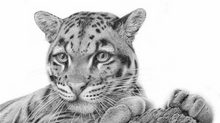Adorable Young Rhinos: The Future of Conservation
- Vincenzo De Luca
- Apr 20, 2023
- 2 min read
Introduction:
Rhinos are majestic creatures that have roamed the earth for millions of years. Unfortunately, they are also some of the most endangered animals on the planet due to poaching and habitat loss. In this article, we will focus on the younger members of the rhino species, exploring their unique characteristics, behavior, and the conservation efforts being made to protect them and their habitat.
Appearance and Characteristics:
Rhino calves are born after a gestation period of approximately 15-16 months. They are covered in soft brown hair and are able to stand up within an hour of birth. As they grow, their skin thickens and forms into the characteristic armor-like plates that protect them from predators. Rhino calves are incredibly strong and can run just a few hours after birth.
Behavior and Diet:
Rhino calves stay with their mothers for the first two to three years of their lives. During this time, they learn important survival skills such as how to find food and water, and how to protect themselves from predators. Rhinos are herbivores and feed on a diet of grasses, leaves, shoots, and fruits.

Conservation:
Rhinos are currently classified as critically endangered by the International Union for Conservation of Nature (IUCN). Poaching is one of the biggest threats to their survival, as their horns are highly valued in some cultures for their supposed medicinal properties. Habitat loss due to human activity such as mining, logging, and agriculture is also a major problem.

Efforts are being made to protect rhinos and their habitat through conservation education, anti-poaching patrols, and the establishment of protected areas. Some organizations are also working to breed and raise rhinos in captivity, with the hope of reintroducing them into the wild in the future.
Conclusion:
Rhino calves are not only adorable, but they also represent the future of conservation. By protecting them and their habitat, we can ensure that these magnificent creatures will continue to thrive for generations to come. It is our responsibility to work towards a world where rhinos and all endangered species can live safely and freely in their natural habitats.














































Comments